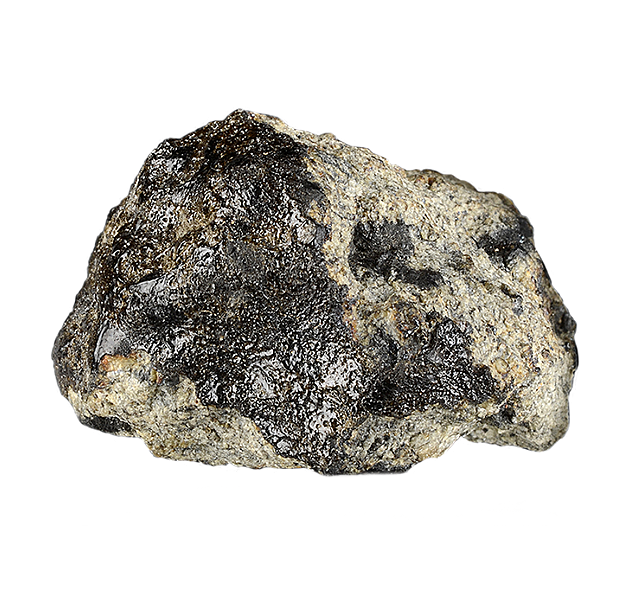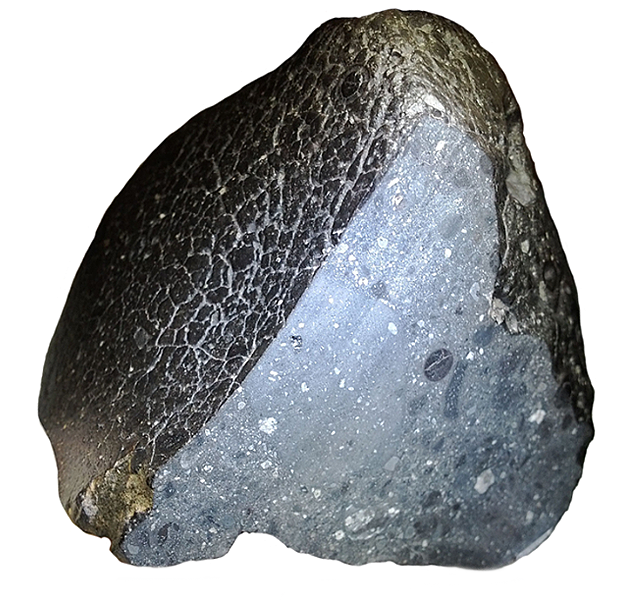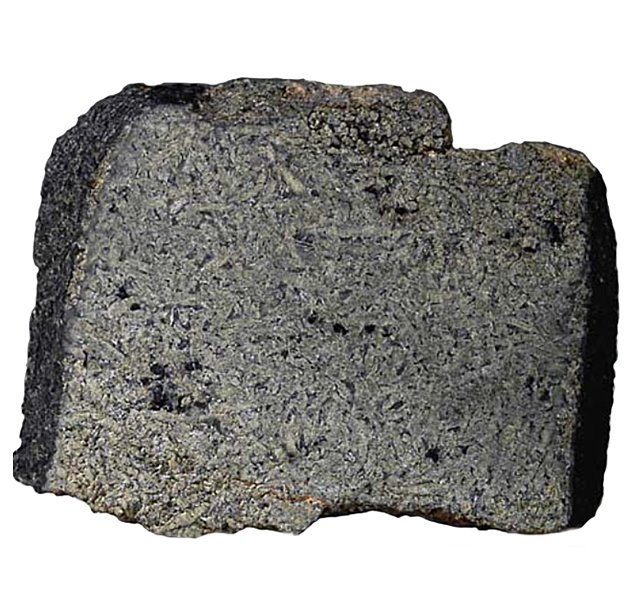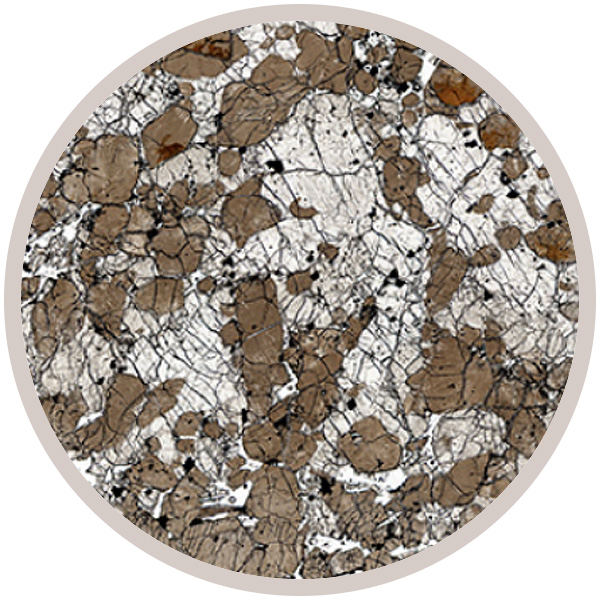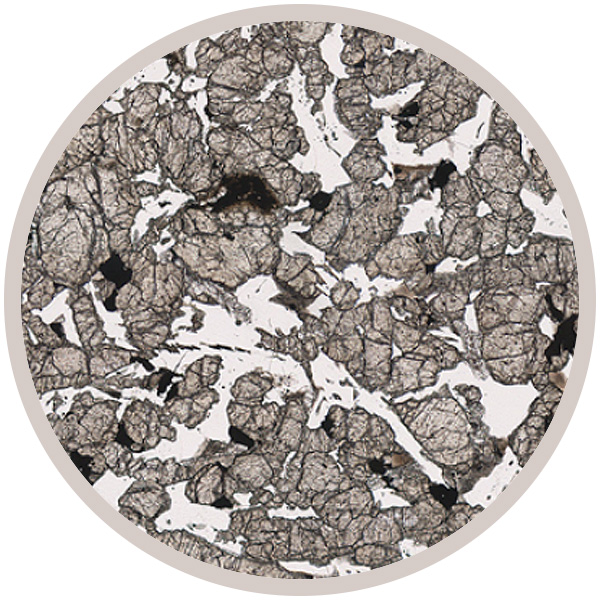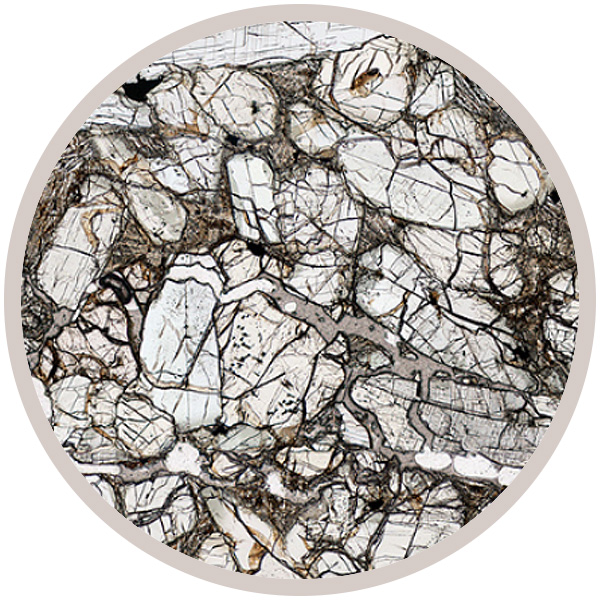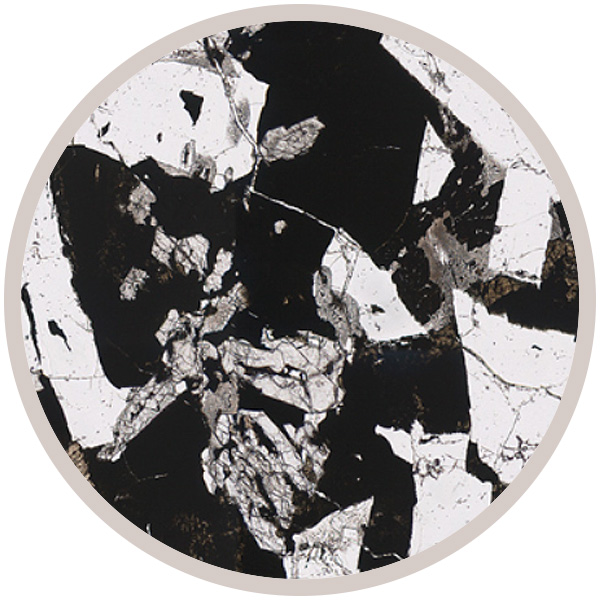
Fact sheet
This basaltic shergottite was discovered in the Mojave Desert by Bob Vernish and stored for several years. Two stones, weighing 452.6 and 245.4 g, respectively, were refound by Bob in his backyard while he was cleaning out a box of rocks that was part of his rock collection.
The basaltic shergottite shows a very high degree of shock generated melt. In thin section the rock consist of plagioclase laths that have been shocked to maskelynite and therefore appear isotropic between crossed polars; pyroxene, small amounts of olivine, titanomagnetite and significant quantities of black glassy melt.
Note the special mounting technique used for this section, the meteorite is surrounded by mounting glue and embedded sand grains. Thus all the quartz that appears in the periphery of the view is actually from Earth.
This collection of meteorites includes Shergottites, Nakhlites and Chassignites (or SNC meteorites) which originate from the surface of the planet Mars.
They carry unique signals of the surface of the planet that allows scientists to study the composition and age of Martian rocks. The collection includes a sample of the famous ALH84001 meteorite, evidence from which was used in 1996 to begin the debate of 'life on Mars?'.
Sample details

